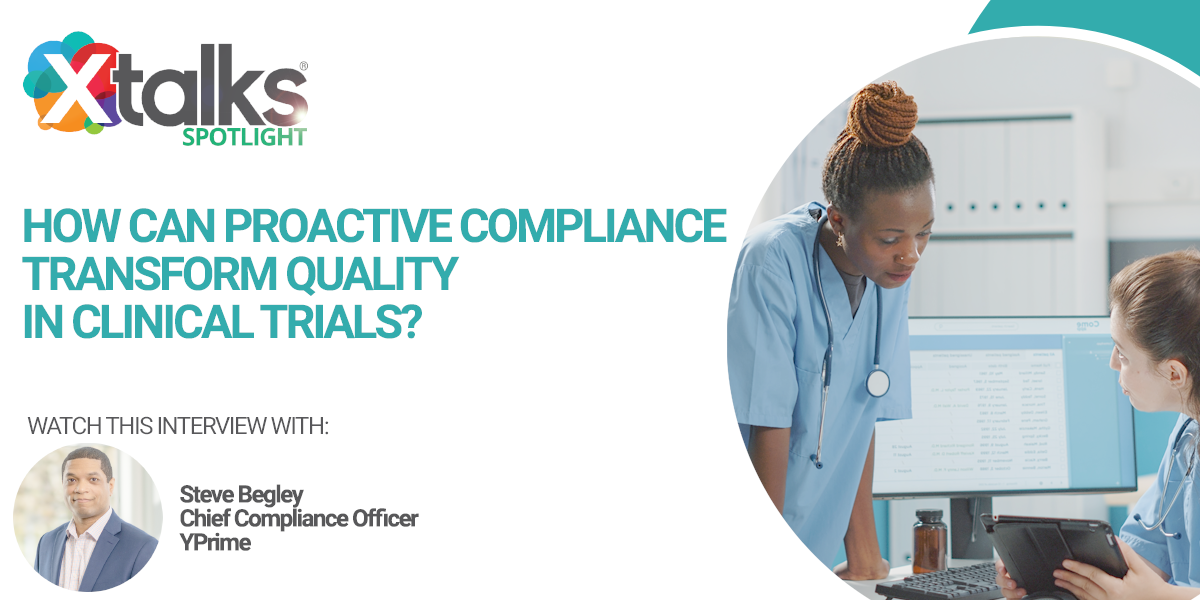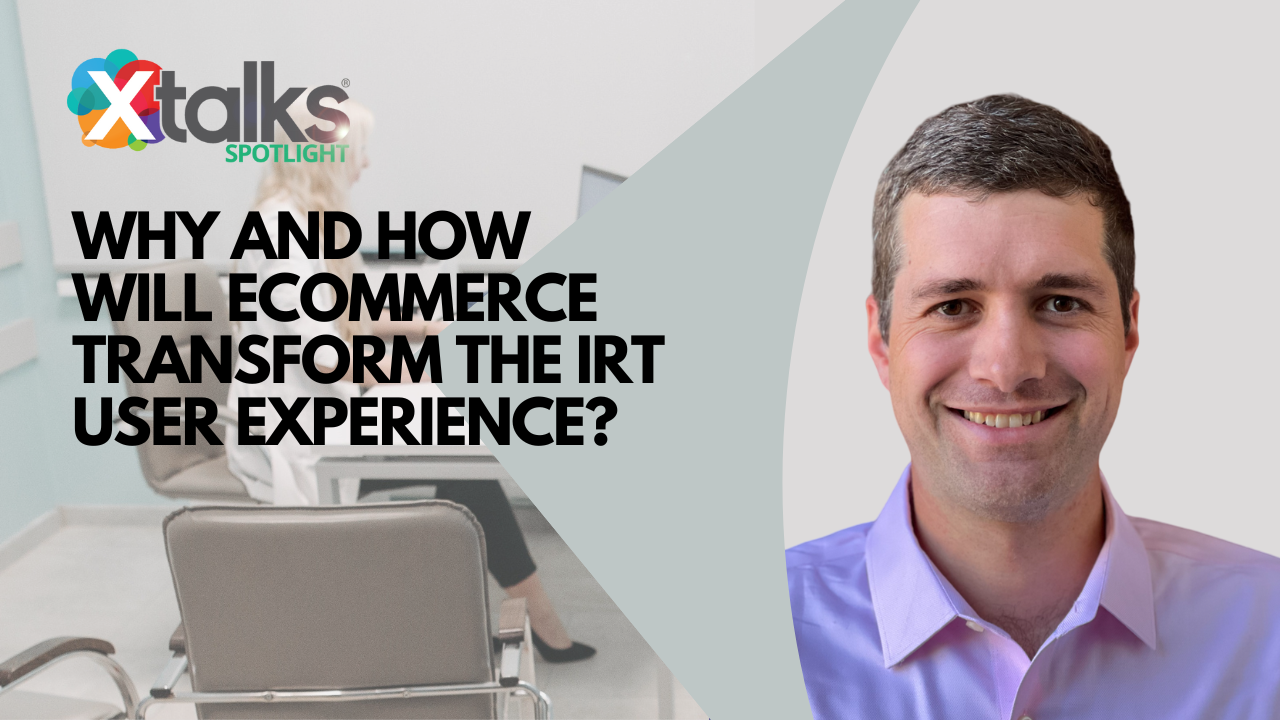As clinical trials become more complex, the need for user-centric design has never been more critical. Leading this charge is Mike Hughes, Chief Product Officer at YPrime. With a robust background in eClinical solutions, Hughes leads the development of site/patient-focused technologies, including electronic clinical outcome assessment (eCOA), interactive response technology (IRT), electronic consent (eConsent) and patient engagement applications. His commitment to enhancing user experience is transforming how clinical trials are conducted, ensuring that both patients and site staff are supported throughout the process.

In this insightful interview with Xtalks, Hughes reveals his practical strategies for developing clinical trial technology that genuinely addresses the needs of patients and site staff.
Hughes and his team are dedicated to user-centric design, transforming the clinical trial experience by crafting intuitive and engaging solutions that simplify processes, alleviate burdens and enhance data quality.
From rethinking intricate assessments to creating unified platforms, Hughes is leading innovations that empower patients, assist site staff and accelerate the development of transformative therapies.
Watch the Spotlight video and read on to learn how his leadership and collaborative spirit are overcoming barriers and setting a new benchmark for patient-focused clinical trials.
The Journey to User-Centric Design
Hughes’ commitment to user-centric design stems from a personal and industry-wide journey. Reflecting on his early days in clinical trials, Hughes recalls, “I joined clinical trials back in 2006 when technology really wasn’t adopted. We were using PalmPilots, modems, phone lines to send data. At that point, there was no thought of user-centricity.”
However, as technology evolved, so did the understanding of its potential to enhance the user experience. Hughes and his team at YPrime pivoted in 2020 to revamp their technology platform, making it more inviting and intuitive. “We want to interact with that patient. We want to spend some time with them to make sure we’re understanding what they’re going through,” Hughes explains.
“It was important for us to make sure that we kept the patient, the site users, the sponsor — really our end users — at the forefront of this application to make it for them, not just for us.”
— Mike Hughes
The COVID-19 pandemic accelerated this shift, emphasizing the need for digital engagement. By focusing on aesthetics and usability, YPrime aims to create technology that feels as familiar and user-friendly as everyday consumer apps. This reduces the cognitive load on users and encourages greater engagement and accurate data collection.
Moreover, YPrime’s patient-centric design ensures the needs and experiences of patients are prioritized. “We know that people are going through a lot in these trials. If we can have a little piece of making their day easier, it helps us sleep a little better at night,” Hughes shares. By reducing the burden on patients and improving their experience, YPrime enhances patient engagement and compliance, which is crucial for trial success.
Collaboration at the Core of YPrime’s Efforts
Developing user-centric technology at YPrime is a deeply collaborative effort. It begins with identifying user needs through whiteboarding exercises and creating initial wireframes. “We identify who our end user is, who the persona is that’s going to be using this feature. Then we reach out to our partners, sponsors, site contacts and a strong patient network to put those designs in front of them,” Hughes explains. These early impressions are crucial for refining the designs before advancing to the prototype stage.
Prototypes are then tested by the same users, with adjustments made based on their feedback until scores are consistently high. “We don’t stop until we start seeing scores above the nines,” Hughes notes. This ensures that the technology is not only functional but truly meets user needs.
Involving patients, site staff and stakeholders throughout the development process guarantees that YPrime’s solutions are practical and intuitive. Hughes acknowledges, “We can build things that we think are cool, but if people don’t know how to use it and they don’t enjoy using it, it’s all for naught.”
Examples of Impactful Innovations
YPrime’s commitment to user-centric design has led to significant advancements in clinical trial technology, such as the Tender Swollen Joint Count eCOA assessment and the glucometer-to-eCOA integration. These tools were developed with direct input from those affected by the conditions they target, ensuring precise, user-friendly solutions.
The Tender Swollen Joint Count eCOA assessment, aimed at rheumatoid arthritis and other related conditions, simplifies a complex task. “Assessing 65 joints for tenderness and swelling is a complex process,” Hughes explains. By collaborating with joint assessors and patients, YPrime created a tool that streamlines the assessment, making it faster and more accurate.
The glucometer-to-eCOA integration was developed in close collaboration with people who have diabetes. It’s aimed at transforming endocrinology and autoimmune clinical trials which require blood glucose logs. YPrime’s solution automates this data collection process, reducing patient burden and ensuring consistent data collection. “Feedback from those who live with diabetes every day helped us build a tool tailored to their needs,” Hughes adds.
These innovations highlight YPrime’s dedication to creating targeted, user-friendly solutions that ease the burden on patients and site staff while enhancing data quality. By focusing on specific therapeutic areas and incorporating user feedback, YPrime ensures their tools are practical and effective.
The Vision of a Unified YPrime App
Hughes’ vision for a unified “YPrime App” aims to improve clinical trials by integrating various tools into a seamless, user-friendly platform. In today’s complex clinical trials, sites and patients often juggle multiple technologies from different vendors, creating unnecessary burdens. Hughes explains, “It’s important for us here at YPrime to focus on the experience, front to back, start to finish.”
“It’s crucial for us to minimize burden, minimize pain points and ease patients through the process.”
— Mike Hughes
This unified approach simplifies complexity by offering a cohesive solution where patients can move through different stages of a trial without realizing they are using multiple products. This integration minimizes cognitive load, allowing patients to focus on their participation rather than navigating technology.
The app begins with eConsent, transitions into eCOA and includes patient engagement features, among other products. “We want to make the journey through a clinical trial as seamless as possible from the technology perspective,” Hughes notes. This unified strategy enhances the user experience and boosts trial efficiency.
Looking forward, Hughes envisions the unified YPrime app evolving with continuous user feedback and technological advancements, further streamlining processes and reducing trial timelines.
Fostering a Culture of Innovation
A key element of YPrime’s success is its collaborative and empowering work culture. Hughes believes in the importance of diverse opinions and collective decision-making.
“Nobody’s ever the smartest person in the room. Nobody’s ever 100 percent right with something that we’re trying to build. It’s a very collaborative effort,” he says. This inclusive approach fosters innovation and ensures that the technology developed is truly user-centric.
Hughes believes that involving everyone in decision-making leads to better solutions and empowers employees. “Because people have a voice in the process, it gives them the empowerment to say, ‘Hey, I really had something to do with this,’” Hughes notes. This sense of ownership is crucial for maintaining motivation and driving continuous improvement.
This dedication to improving the clinical trial experience through teamwork and innovation is what drives YPrime’s success.
Approaching AI and Machine Learning
Hughes emphasizes enhancing human capabilities rather than replacing them. “People get nervous that we’re trying to replace humans with some things. That’s not the approach we take here at YPrime,” Hughes explains. The focus is on enabling humans to perform tasks more efficiently and effectively.
AI streamlines routine tasks, allowing site staff and researchers to focus on critical aspects of clinical trials. “We think AI will never replace a human within our process. We think AI is going to enable humans to do things better, to do things a little faster, a little easier,” Hughes says. By automating mundane tasks, AI can speed up processes.
YPrime’s Contribution in Advancing Human Health
Ultimately, YPrime’s goal is to accelerate the development of life-changing therapies. “The biggest impact that we can have on a trial at YPrime is to get that trial done faster. It’s all about time to market,” Hughes asserts. By streamlining processes and enhancing user experiences, YPrime is helping sponsors bring new treatments to patients more quickly and efficiently.
“We want our software to be easy. We want people to be able to get through it quickly and not be a burden for them so that we can get the data to the sponsors as fast as possible, as clean as possible, and they can submit it,” Hughes explains. By making technology intuitive and user-friendly, YPrime helps ensure trials run smoothly and efficiently.
Advice for Industry Leaders
Hughes’ advice to other leaders in the life sciences industry is rooted in humility and continuous improvement. “You have to keep pushing to change the way things work. You have to keep pushing to make software easier, to make these processes easier,” he advises. By embracing feedback and striving for innovation, leaders can ensure that their technologies truly serve the needs of their users.
Hughes and his team at YPrime are setting a new standard in clinical trials through their commitment to user-centric design. By prioritizing the needs of patients and site staff, they are reshaping the future of clinical research, making it more efficient, effective and patient-friendly.
This article was created in collaboration with the sponsoring company and the Xtalks editorial team.







Join or login to leave a comment
JOIN LOGIN